Author Archives: Ajitesh Kumar
Top Tutorials – Neural Network Back Propagation Algorithm
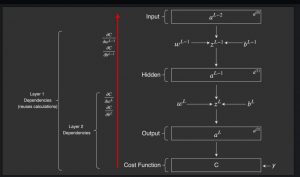
Here are the top web pages /videos for learning back propagation algorithm used to compute the gradients in neural network. I will update this page with more tutorials as I do further deep dive on back propagation algorithm. For beginners or expert level data scientists / machine learning enthusiasts, these tutorials will prove to be very helpful. Before going ahead and understanding back propagation algorithm from different pages, lets quickly understand the key components of neural network algorithm: Feed forward algorithm: Feed forward algorithm represents the aspect of how input signals travel through different neurons present in different layers in form of weighted sums and activations, and, result in output / …
Product Manager – Machine Learning Interview Questions

In this post, you will learn about some of the interview questions which can be asked in the AI / machine learning based product manager / business analyst job. Some of the questions listed in this post can also prove to be useful for the interview for the job position of director or vice president, product management. The interview questions can be categorized based on some of the following topics: Machine learning high level concepts Identifying a problem as machine learning problems Identifying business metrics vs value generation Feature engineering Working with data science team in model development lifecycle Monitoring model performance Model performance metrics presentation to key stakeholders Setting up …
Get Started with Julia – Hello World
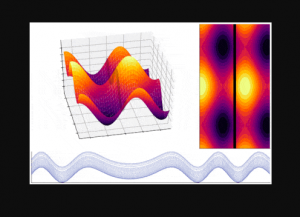
In this post, you will learn about instructions to set up Julia and getting started with Julia using Anaconda / Jupyter Notebook with information on learning resources in relation to Data Sciences / Machine Learning. Download & Setup Julia First and foremost, let’s get set up / install Julia. Go to the Julia download page and download the install package based on your operating system. I downloaded the dmg file for Mac, double clicked on the dmg file and installed the Julia. The installation was pretty easy. Double-click on Julia application or execute Julia command and it starts an interactive session (terminal) also known as REPL session. The simplest way …
Python Sklearn – How to Generate Random Datasets
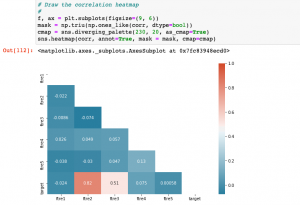
In this post, you will learn about some useful random datasets generators provided by Python Sklearn. There are many methods provided as part of Sklearn.datasets package. In this post, we will take the most common ones such as some of the following which could be used for creating data sets for doing proof-of-concepts solution for regression, classification and clustering machine learning algorithms. As data scientists, you must get familiar with these methods in order to quickly create the datasets for training models using different machine learning algorithms. Methods for generating datasets for Classification Methods for generating datasets for Regression Methods for Generating Datasets for Classification The following is the list of …
Neural Networks and Mathematical Models Examples
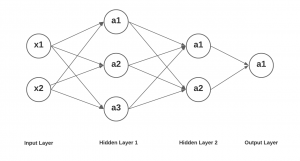
In this post, you will learn about concepts of neural networks with the help of mathematical models examples. In simple words, you will learn about how to represent the neural networks using mathematical equations. As a data scientist / machine learning researcher, it would be good to get a sense of how the neural networks can be converted into a bunch of mathematical equations for calculating different values. Having a good understanding of representing the activation function output of different computation units / nodes / neuron in different layers would help in understanding back propagation algorithm in a better and easier manner. This will be dealt in one of the …
Adaptive Linear Neuron (Adaline) Python Example

In this post, you will learn the concepts of Adaline (ADAptive LInear NEuron), a machine learning algorithm, along with Python example.As like Perceptron, it is important to understand the concepts of Adaline as it forms the foundation of learning neural networks. The concept of Perceptron and Adaline could found to be useful in understanding how gradient descent can be used to learn the weights which when combined with input signals is used to make predictions based on unit step function output. Here are the topics covered in this post in relation to Adaline algorithm and its Python implementation: What’s Adaline? Adaline Python implementation Model trained using Adaline implementation What’s Adaptive …
Yann LeCun Deep Learning Free Online Course

This post is about listing down free online course materials for deep learning (PyTorch) by none other than Yann LeCun. Here are some useful links to the deep learning course: Deep Learning course – Homepage Deep learning lecture slides Github pages having Jupyter notebooks having PyTorch code Lectures slides, notebooks and related YouTube videos can be found on the deep learning (DL) course home page. It is a 14 week course and covers different topics such as following: Introduction to deep learning (What DL can do, what are good features / representations) Gradient descent and back propagation algorithm Artificial neural networks Convolution neural networks (Convnets) and related applications Regularization / Optimization …
Python Implementations of Machine Learning Models

This post highlights some great pages where python implementations for different machine learning models can be found. If you are a data scientist who wants to get a fair idea of whats working underneath different machine learning algorithms, you may want to check out the Ml-from-scratch page. The top highlights of this repository are python implementations for the following: Supervised learning algorithms (linear regression, logistic regression, decision tree, random forest, XGBoost, Naive bayes, neural network etc) Unsupervised learning algorithms (K-means, GAN, Gaussian mixture models etc) Reinforcement learning algorithms (Deep Q Network) Dimensionality reduction techniques such as PCA Deep learning Examples that make use of above mentioned algorithms Here is an insight into …
Python – Extract Text from HTML using BeautifulSoup

In this post, you will learn about how to use Python BeautifulSoup and NLTK to extract words from HTML pages and perform text analysis such as frequency distribution. The example in this post is based on reading HTML pages directly from the website and performing text analysis. However, you could also download the web pages and then perform text analysis by loading pages from local storage. Python Code for Extracting Text from HTML Pages Here is the Python code for extracting text from HTML pages and perform text analysis. Pay attention to some of the following in the code given below: URLLib request is used to read the html page …
Top 10 Data Science Skills for Product Managers

In this post, you will learn about some of the top data science skills / concepts which may be required for product managers / business analyst to have, in order to create useful machine learning based solutions. Here are some of the topics / concepts which need to be understood well by product managers / business analysts in order to tackle day-to-day challenges while working with data science / machine learning teams. Knowing these concepts will help product managers / business analyst acquire enough skills in order to solve machine learning based problems. Understanding the difference between AI, machine learning, data science, deep learning Which problems are machine learning problems? …
Python – Extract Text from PDF file using PDFMiner
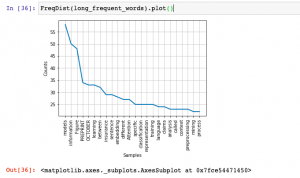
In this post, you will get a quick code sample on how to use PDFMiner, a Python library, to extract text from PDF files and perform text analysis. I will be posting several other posts in relation to how to use other Python libraries for extracting text from PDF files. In this post, the following topic will get covered: How to set up PDFMiner Python code for extracting text from PDF file using PDFMiner Setting up PDFMiner Here is how you would set up PDFMiner.six. You could execute the following command to get set up with PDFMiner while working in Jupyter notebook: Python Code for Extracting Text from PDF file …
NLTK Hello World Python Example
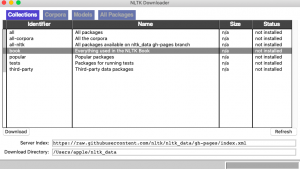
In this post, you will learn about getting started with natural language processing (NLP) with NLTK (Natural Language Toolkit), a platform to work with human languages using Python language. The post is titled hello world because it helps you get started with NLTK while also learning some important aspects of processing language. In this post, the following will be covered: Install / Set up NLTK Common NLTK commands for language processing operations Install / Set up NLTK This is what you need to do set up NLTK. Make sure you have Python latest version set up as NLTK requires Python version 3.5, 3.6, 3.7, or 3.8 to be set up. In Jupyter notebook, you could execute …
RANSAC Regression Explained with Python Examples
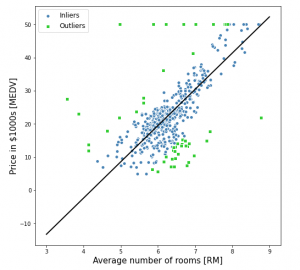
In this post, you will learn about the concepts of RANSAC regression algorithm along with Python Sklearn example for RANSAC regression implementation using RANSACRegressor. RANSAC regression algorithm is useful for handling the outliers dataset. Instead of taking care of outliers using statistical and other techniques, one can use RANSAC regression algorithm which takes care of the outlier data. In this post, the following topics are covered: Introduction to RANSAC regression RANSAC Regression Python code example Introduction to RANSAC Regression RANSAC (RANdom SAmple Consensus) algorithm takes linear regression algorithm to the next level by excluding the outliers in the training dataset. The presence of outliers in the training dataset does impact …
Beta Distribution Explained with Python Examples
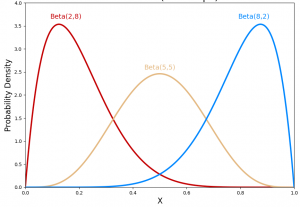
In this post, you will learn about Beta probability distribution with the help of Python examples. As a data scientist, it is very important to understand beta distribution as it is used very commonly as prior in Bayesian modeling. In this post, the following topics get covered: Beta distribution intuition and examples Introduction to beta distribution Beta distribution python examples Beta Distribution Intuition & Examples Beta distribution is widely used to model the prior beliefs or probability distribution in real world applications. Here is a great article on understanding beta distribution with an example of baseball game. You may want to pay attention to the fact that even if the baseball …
Bernoulli Distribution Explained with Python Examples
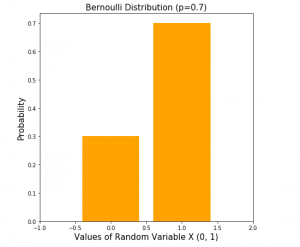
In this post, you will learn about the concepts of Bernoulli Distribution along with real-world examples and Python code samples. As a data scientist, it is very important to understand statistical concepts around various different probability distributions to understand the data distribution in a better manner. In this post, the following topics will get covered: Introduction to Bernoulli distribution Bernoulli distribution real-world examples Bernoulli distribution python code examples Introduction to Bernoulli Distribution Bernoulli distribution is a discrete probability distribution representing the discrete probabilities of a random variable which can take only one of the two possible values such as 1 or 0, yes or no, true or false etc. The probability of …
Deep Learning Explained Simply in Layman Terms
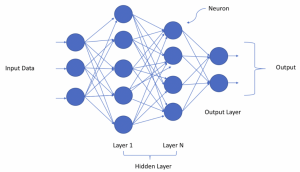
In this post, you will get to learn deep learning through simple explanation (layman terms) and examples. Deep learning is part or subset of machine learning and not something which is different than machine learning. Many of us when starting to learn machine learning try and look for the answers to the question “what is the difference between machine learning & deep learning?”. Well, both machine learning and deep learning is about learning from past experience (data) and make predictions on future data. Deep learning can be termed as an approach to machine learning where learning from past data happens based on artificial neural network (a mathematical model mimicking human brain). …
I found it very helpful. However the differences are not too understandable for me